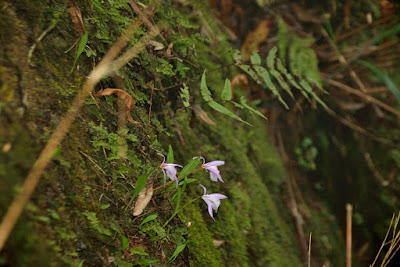Pleione formosana is native to southeastern China as well as northern and central Taiwan, where it grows in mosses on sunlit rocks, on fallen logs or on tree trunks, in damp, foggy places, at an altitude of 1500-2000 m...
Pleione formosana also called as The Formosa Pleione, Taiwan pleione, Windowsill orchid, Coelogyne formosana, Pleione bulbocodioides var. nivea, Pleione formosana f. alba, Pleione formosana var. nivea, Pleione hookeriana f. nivea, Pleione hui, Pleione pricei, Pleione prisei, is a species of the genus Pleione. This species was described by Bunzō Hayata in 1911.
IDENTIFY PLEIONE FORMOSANA
Pleione formosana is native to southeastern China as well as northern and central Taiwan, where it grows in mosses on sunlit rocks, on fallen logs or on tree trunks, in damp, foggy places, at an altitude of 1500-2000 m.
It is a small sized, cold growing terrestrial or lithophyte, which reaching 15-30 cm in height, with compressed, ovoid to ovoid-conical, 1-3 cm long pseudobulbs carrying a single, apical, erect to arcuate, oblanceolate to elliptic, plicate, acuminate, deciduous, 10-25 cm long leaf that is shortly petiolate.
The Formosa Pleione blooms in the late winter and early spring with one or two flowers per erect, to 22 cm long, inflorescence which arises basally as a new growth appears. The flowers have a diameter of 8-10 cm. They are usually from lilac to pink, but the flowers are very variable in size and colors, resulting in many varieties named. The lip is very frayed, colored in the middle yellow, with red or brown spots on the edges.
PLEIONE FORMOSANA CARE AND CULTURE
Pleione formosana is a strong, resistant to temperatures below zero, easily adaptable plant that easily blooms as soon as a cool resting period passes. However if it is grown at too high a temperature it will go down and die. Every year, each growth produces 2 new pseudobulbs with a size capable of flowering. In areas where the winters are mild, they are often grown outside in peat decks. If they are kept in a drought, they can survive even frosts from -6 to -8 ° C.
Light:
This plant needs a light level of 24000-40000 lux. Distributed light is recommended. Although this species is easily adaptable, direct sun should be avoided.
Temperature:
It is a plant with moderate thermal requirements. In summer, the average day temperature is 21-24 ° C, the average night 12-16 ° C, which gives a daily difference of 5-12 ° C. The average temperature of the winter day is 17-21 ° C, night 7-10 ° C, which gives a daily amplitude of 9-11 ° C.
Humidity:
The Formosa Pleione needs the humidity of 80-90% almost for all year round.
Substrate, growing media and repotting:
The substrate should keep the moisture, but it must be well-permeable. Repotting is best done after the leaves have fallen.
Watering:
During active growth, the growing medium should be kept moist. The precipitation scheme is wet / wet, with a short dry period in winter.
Fertilizer:
A fertilizer with NPK 3-2-2 containing microelements, with a concentration of 1/2 the recommended dose should be used during the period of active growth. However, NPK 2-3-3 fertilizer with a concentration of 1/2 the recommended dose is recommended from mid-July until the leaves fall.
Rest period:
Pleione formosana requires at least occasional temperature drop to 0-2 ° C in winter. Watering should be limit to occasional fogs, which will protect against problems with pseudobulb rotting. The plants should not be fertilized during this period.















COMMENTS